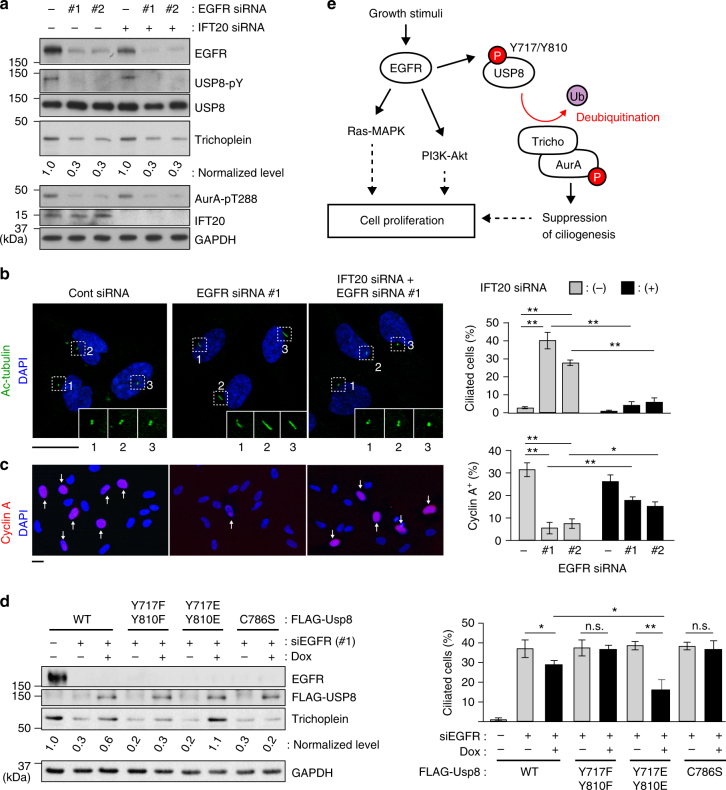Fig. 8.
EGFR contributes cell cycle progression through USP8-trihocplein pathway-mediated cilia suppression. a–c Twenty-four hours after transfection with control or IFT20 siRNA, RPE1 cells were further transfected with control or EGFR siRNA (#1 or #2) and then cultured for 48 h in normal medium (10% FBS). The cells were analyzed by immunoblotting with indicated antibodies (a), and immunofluorescence staining with anti-acetylated-tubulin and anti-cyclin A to evaluate percentages of ciliated cell (b) and cyclin A-positive cell (c), respectively. Scale bars, 20 μm. d TetOn-RPE1 FLAG-USP8 (WT, Y717F/Y810F, Y717E/Y810E, C786S) cells were transfected with control or EGFR siRNA (#1) and then cultured for 48 h in the presence or absence of Dox (10 ng ml−1). Immunoblotting analysis with indicated antibodies (left) and percentages of ciliated cell (right) are shown. e Proposed model: normalized intensities of trichoplein/GAPDH in a and d are shown as mean from three independent biological replicates. Graphs represent mean ± SD from three independent experiments (n > 200 each). **p < 0.01, *0.01 < p < 0.05, n.s. not significant, two-tailed unpaired student’s t-tests

